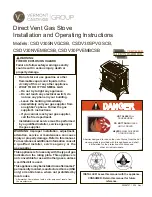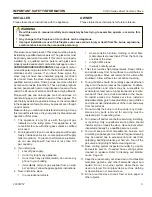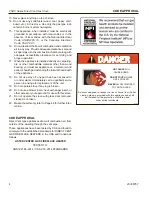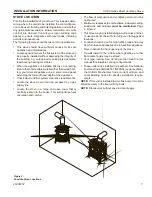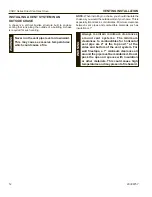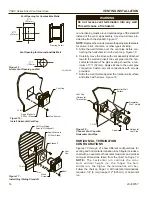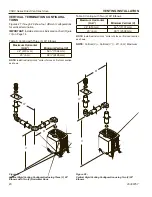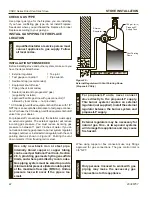
20306757
11
CSDV Series Direct Vent Gas Stove
VENTING INSTALLATION
W
ARNING
Read all instructions completely and
thoroughly before attempting installation.
Failure to do so could result in serious injury,
property damage or loss of life. Operation
of improperly installed and maintained
venting system could result in serious injury,
property damage or loss of life.
W
ARNING
Failure to follow these instructions will
void the warranty.
INSTALLATION PRECAUTIONS
Consult local building codes before beginning the
installation. The installer must make sure to select the
proper vent system for installation. Before installing vent
kit, the installer must read this stove manual and vent
kit instructions.
Only a qualified installer/service person should install vent
-
ing system. The installer must follow these safety rules:
•
Wear gloves and safety glasses for protection.
•
Use extreme caution when using ladders or when
on rooftops.
•
Be aware of electrical wiring locations in walls and
ceilings.
The following actions will void the warranty on your venting
system:
•
Installation of any damaged venting component.
•
Unauthorized modification of the venting system.
•
Installation of any component part not manufactured
or approved by Vermont Castings Group.
•
Installation other than permitted by these instruc-
tions.
INSTALLATION PLANNING
There are two basic types of direct-vent installation:
•
Horizontal Termination
•
Vertical Termination
It is important to select the proper length of vent pipe for
the type of termination you choose. It is also important to
note the wall thickness.
FOR HORIZONTAL TERMINATION
Select the amount of vertical rise desired. The horizontal
run of venting must have
1
/
4
" rise for every 12" of run
towards the termination.
W
ARNING
This stove must be vented to the outside.
The venting system must NEVER be
attached to a chimney serving a separate
solid fuel burning appliance. Each gas
appliance must use a separate vent system.
Do not use common vent systems.
W
ARNING
Horizontal sections of this vent system
require a minimum clearance of 2" from
the top of the pipe and 1" minimum to the
sides and bottom. Vertical sections of this
system require a minimum of 1" clearance
to combustible materials on all sides of
the pipe.
Only a 1" clearance is required
where the vent passes through the nearest
vertical wall.
You may use up to three 90° elbows in this vent configu
-
ration. Refer to
Horizontal Termination Configurations
on
Page 16
.
FOR VERTICAL TERMINATION
Measure the distance from the stove flue outlet to the ceil
-
ing. Add the ceiling thickness, the vertical rise in an attic or
second story, and allow for sufficient vent height above the
roof line. You may use one or two 90° elbows in this vent
configuration. Refer to
Vertical Termination Configurations
on Page 18.
NOTE:
You may use two 45° elbows in place of a 90° elbow.
You must follow rise to run ratios when using 45° elbows.
The appliance is approved for use with three 90° elbows
maximum or a combination of 90° and 45° elbows up to
a maximum of 270°.
For two-story applications, firestops are required at each
floor level. If an offset is needed in the attic, additional pipe
and elbows will be required.
You may use a chase with a vent termination with exposed
pipe on the exterior of the house. Refer to
Installing Vent
System in a Chase
below.
It is very important that the venting system maintain its
balance between the combustion air intake and the flue
gas exhaust. Certain limitations apply to vent configurations
and must be strictly followed.
NOTICE
Treatment of firestops and construction of
the chase may vary from building type to
building type. These instructions are not
substitutes for the requirements of local
building codes. You must follow all local
building codes.

